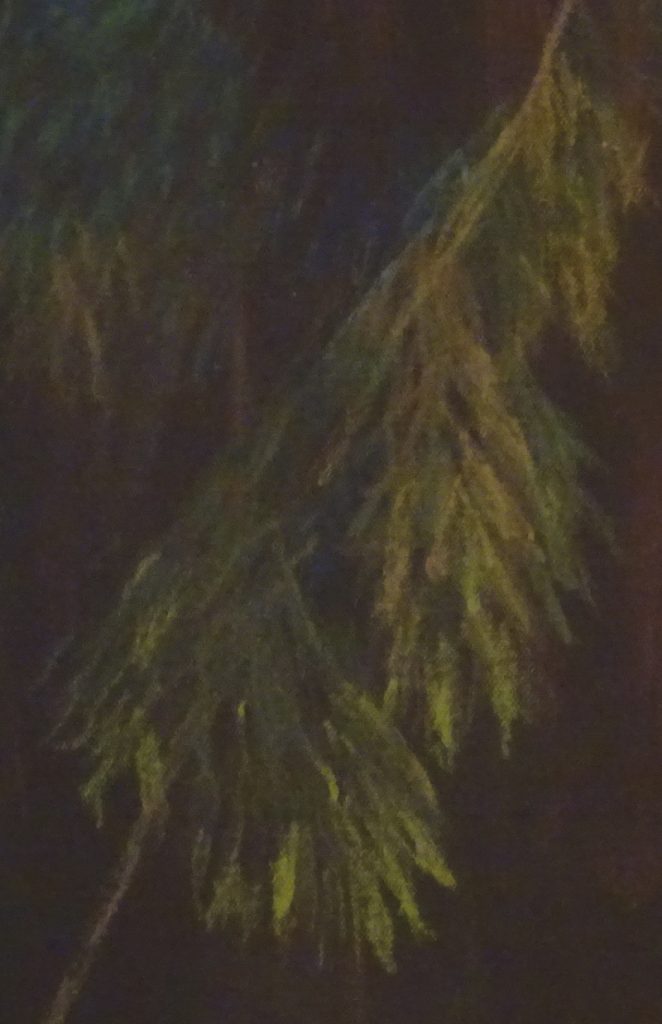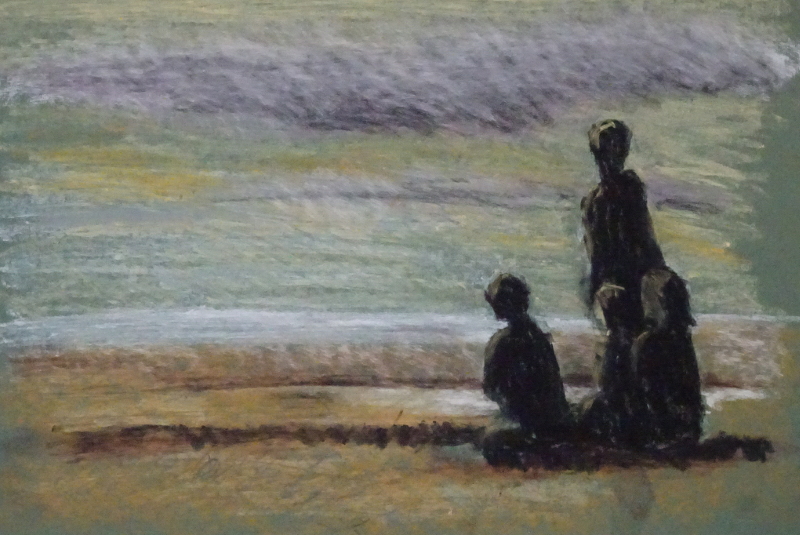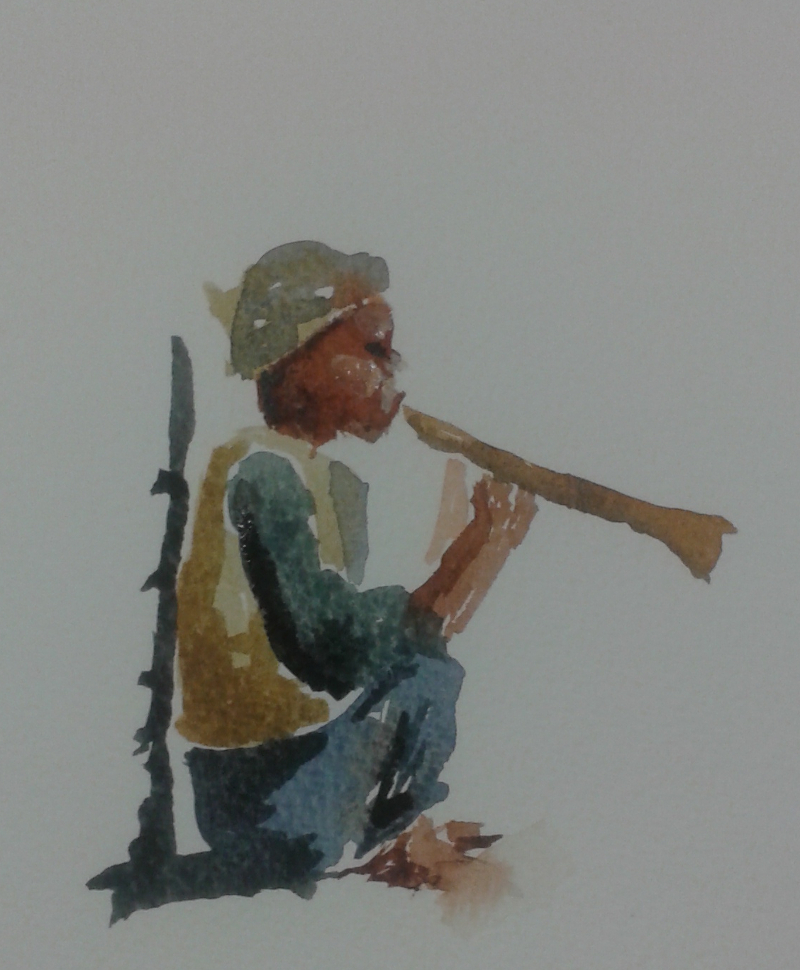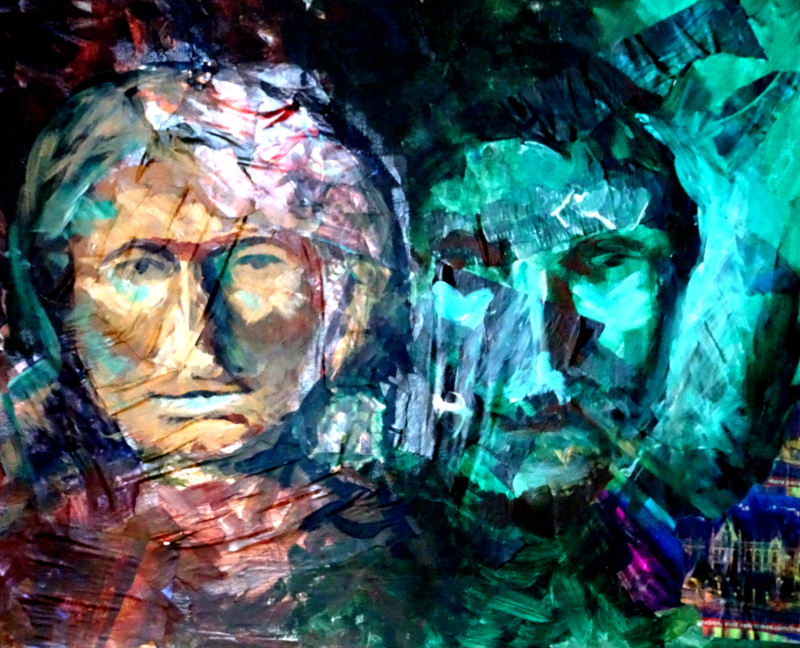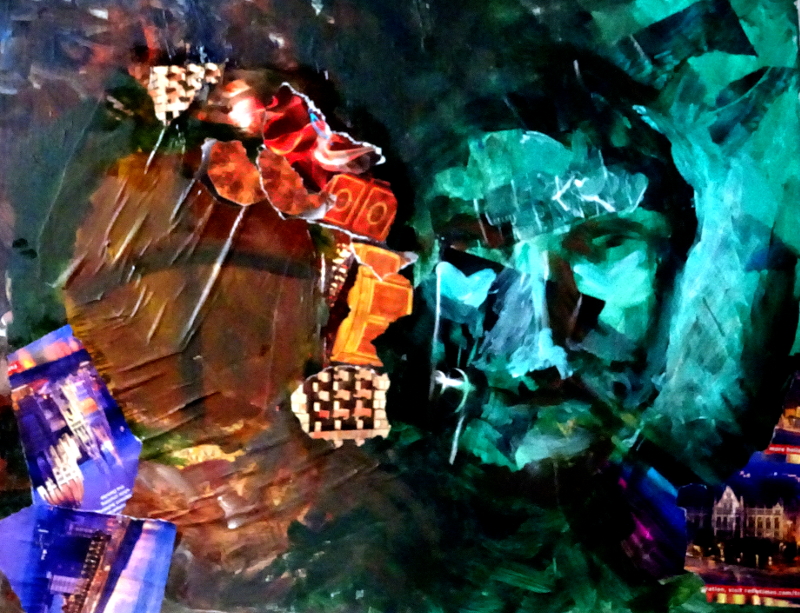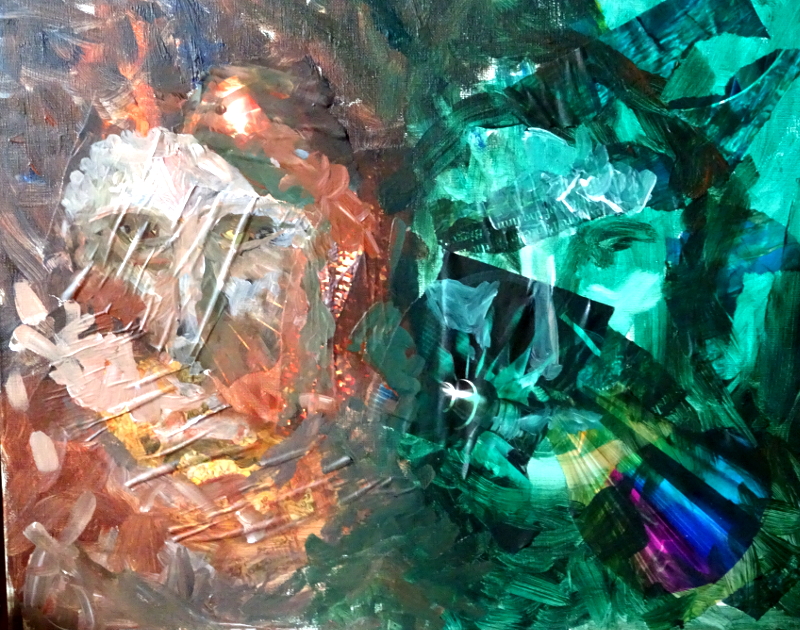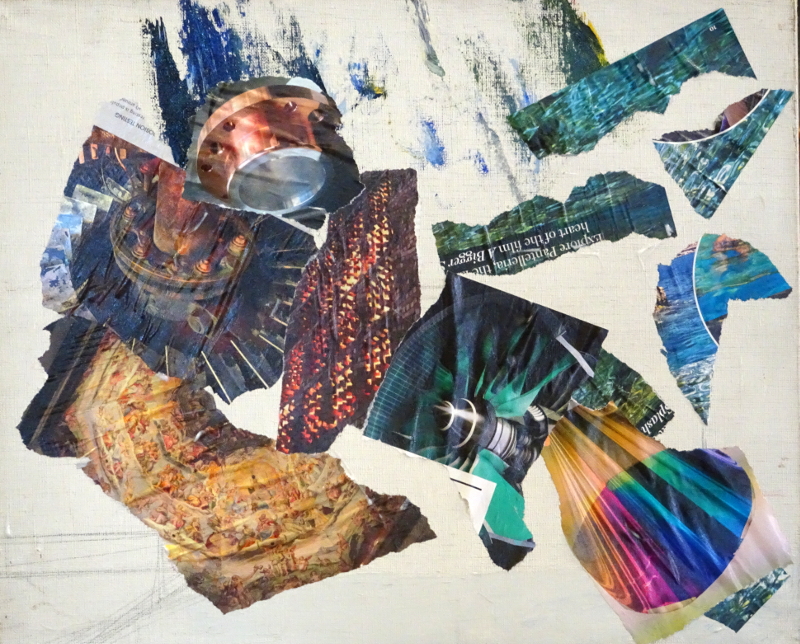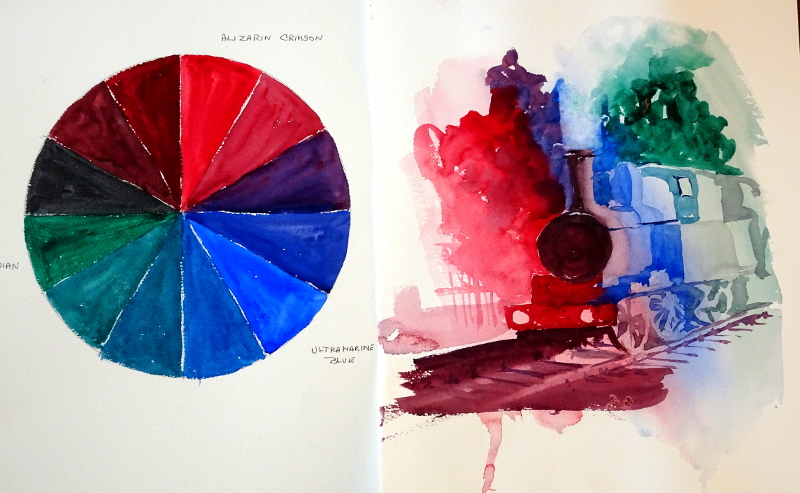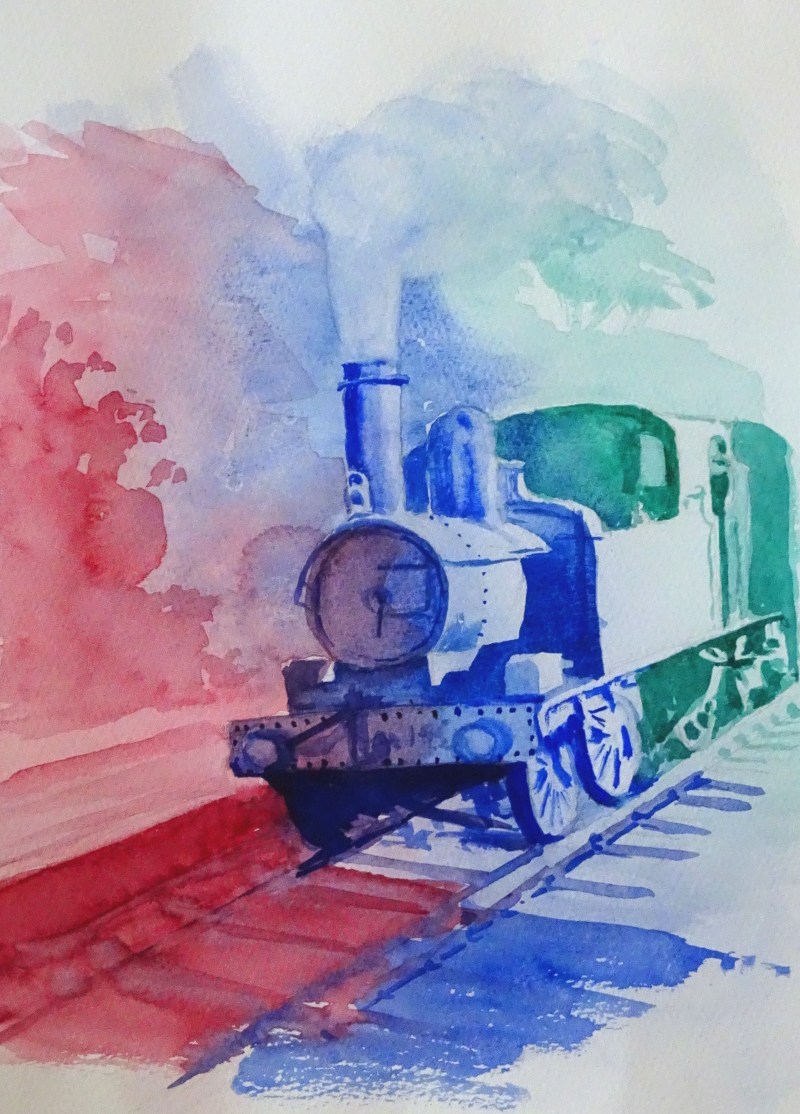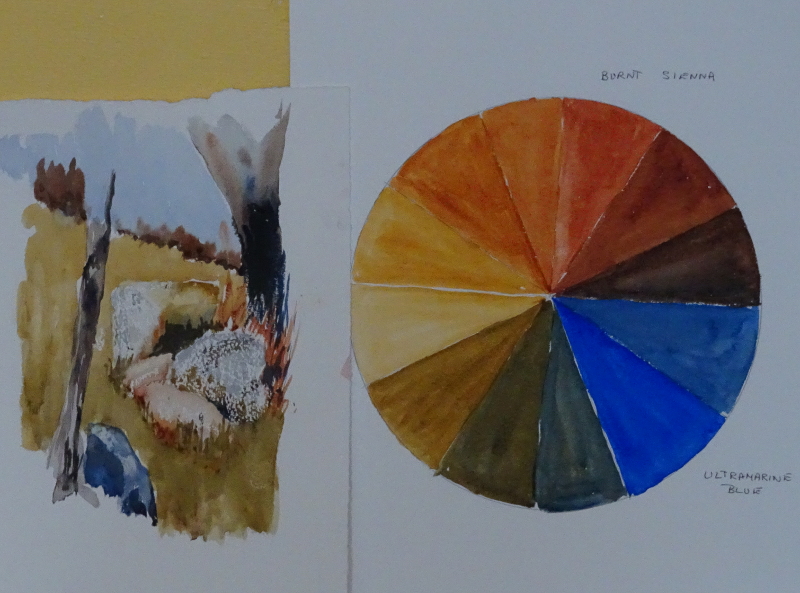Returning to my big painting “In the sunshine” after about a year has left me in a bit of a state. There seems to be so much wrong with it. When I left it last year, I though it was nearly finished, but now I can see bad drawing and awkward concepts all over. Still, on the positive side that means I can attack it with gusto, rather than dabbing at the faces with the aim of achieving a likeness. This time, though, I need to keep the momentum going to the end – I don’t want another period of re-entry like this one!
It’s mainly, but not entirely the figures. One of those things which happen when you are struggling with a painting is that the area under attack “grows”, so that properly proportioned figures become ridiculously long limbed or large-headed, and the area around grows a halo of mismatched colour are you seek to make correction. Both the figures and also the pillar beside them have grown in length and halo.
Since correcting her legs, I have become dissatisfied with her pose, while his arm is miles too long and bent in a funny place. I don’t like his legs either. The two pillars are no longer aligned, and the pristine paving has a bad attack of measles. (All these points may have appeared because I am observing more clearly these days, so maybe that’s a positive too).
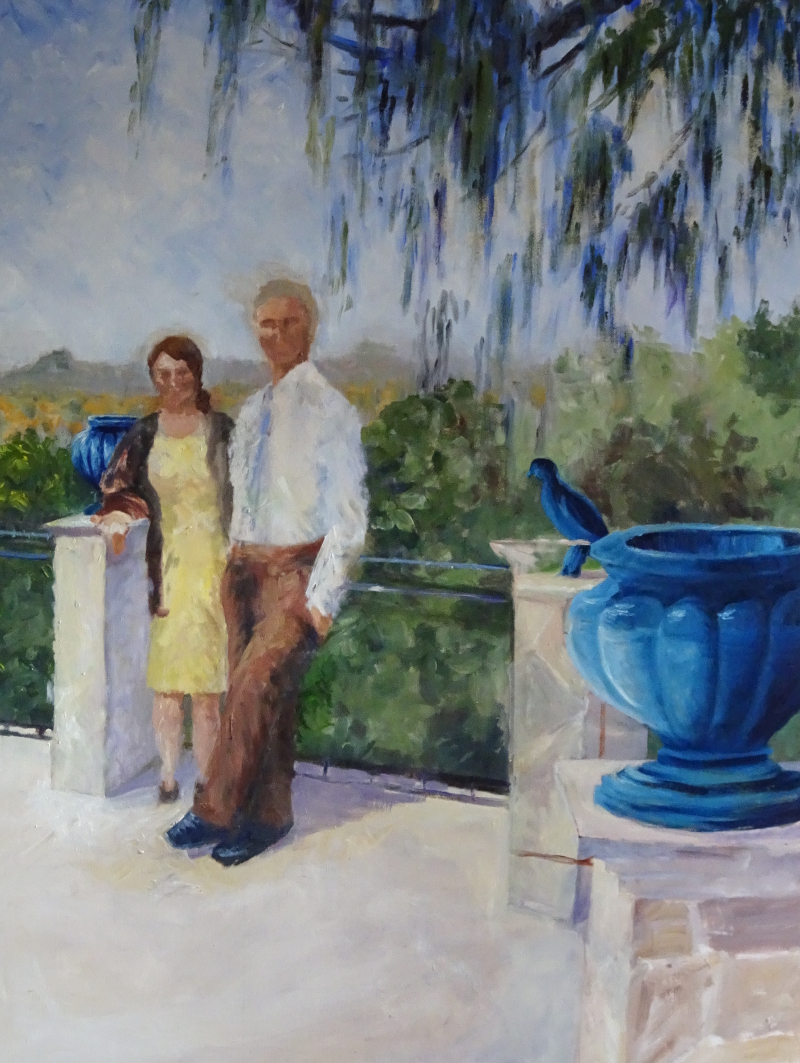 Here you can see some of my corrections. I’ve lifted the whole of the right hand pillar by quite a bit, but it now lines up with the far pillar. This necessitated altering the ironwork, as well. I also lifted the belt of his trousers as his torso had grown longer and longer, and changed the bend in his arm. She is better proportioned too. However, her legs are like tree trunks, and his legs look like he wants to go somewhere in a hurry! The return on the pillar base near the figure is too acute, and I am now wondering if I should have altered the far pillar instead of the near one. Maybe I should wash off those corrections with turps right now while the paint is wet, and think again.
Here you can see some of my corrections. I’ve lifted the whole of the right hand pillar by quite a bit, but it now lines up with the far pillar. This necessitated altering the ironwork, as well. I also lifted the belt of his trousers as his torso had grown longer and longer, and changed the bend in his arm. She is better proportioned too. However, her legs are like tree trunks, and his legs look like he wants to go somewhere in a hurry! The return on the pillar base near the figure is too acute, and I am now wondering if I should have altered the far pillar instead of the near one. Maybe I should wash off those corrections with turps right now while the paint is wet, and think again.

